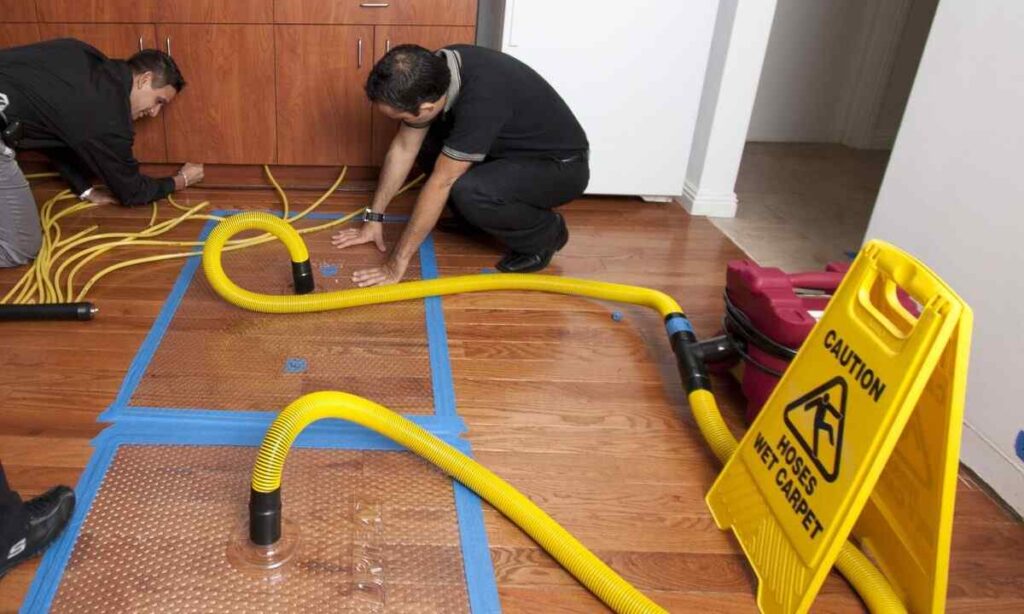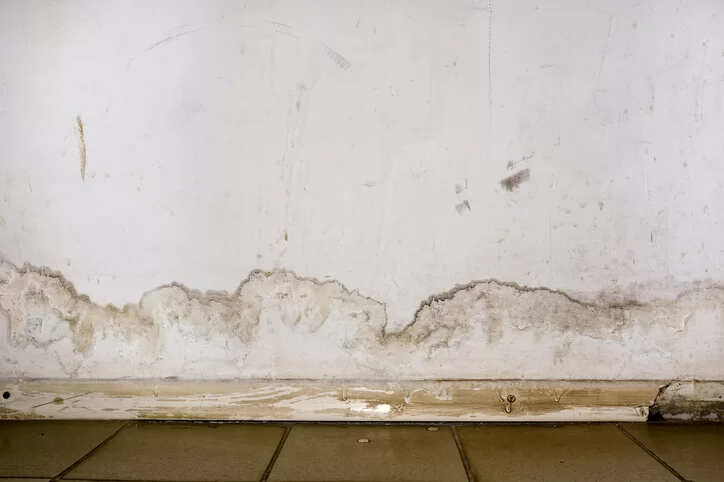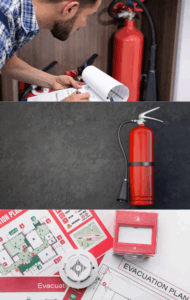Blogs
Mold Prevention and Remediation After Water Damage in Plano

Water damage is an unfortunate reality that many homeowners in Plano, Texas, face due to unpredictable weather or unexpected plumbing issues. Beyond the immediate concerns of water damage lies a silent threat – mold. Mold can flourish in the damp aftermath of water damage, posing significant risks to both the structural integrity of your home and the health of its inhabitants. In this comprehensive guide, Intfensa Dry will help you discover the crucial steps in mold prevention and remediation after water damage in Plano, ensuring a safe and resilient living environment for you and your family. Let’s delve into the intricacies of safeguarding your home and health against the insidious presence of mold.
Understanding the Aftermath of Water Damage:
Before delving into mold prevention and remediation, it’s essential to understand the aftermath of water damage. Whether it’s a burst pipe, a roof leak, or flooding from heavy rains, water intrusion can create an ideal environment for mold growth. Mold spores are present everywhere, and when they encounter damp or wet conditions, they can quickly multiply and colonize various surfaces, including walls, ceilings, and even furniture.

The key to effective mold prevention and remediation lies in a swift response to water damage. Time is of the essence, as the longer water lingers, the higher the likelihood of mold infestation. Immediate action is crucial to minimize the extent of damage and prevent mold from taking hold.
Swift Water Damage Response:
In the aftermath of water damage, the first 24 to 48 hours are pivotal, demanding a swift and decisive response to mitigate the potential onset of mold growth. Whether caused by severe weather, plumbing mishaps, or unexpected leaks, water intrusion poses a dual threat to both the structural integrity of your home and the health of its occupants. The immediate aftermath requires a well-coordinated approach, prioritizing safety, and efficient damage control. From promptly identifying and resolving the source of water intrusion to the crucial tasks of water extraction and thorough drying, each step plays a vital role in minimizing the impact of water damage and thwarting the ideal conditions for mold to thrive. This section delves into the critical aspects of a swift water damage response, providing a foundation for effective mold prevention and remediation in Plano.
Ensuring safety is the foremost priority when dealing with water-damaged areas. Before entering, it’s imperative to assess potential hazards, especially regarding electrical systems. Turning off electricity to affected areas is a critical precaution to prevent electrical accidents. Following this, a systematic assessment is crucial to identify and rectify the source of water intrusion promptly. Whether it’s stemming a leak, repairing a broken pipe, or seeking professional assistance for roof damage, addressing the root cause is paramount. Subsequently, the rapid removal of standing water through the use of pumps or wet/dry vacuums is essential to curtail the moisture that fuels mold growth. Once excess water is extracted, a thorough drying process, facilitated by fans and dehumidifiers, is initiated. Adequate ventilation complements this stage, creating an environment inhospitable to mold development. This comprehensive approach not only tackles immediate concerns but lays a foundation for effective mold prevention in the aftermath of water damage.
Implementing Mold Prevention Strategies:
In the aftermath of water damage, the looming specter of mold growth necessitates a proactive and vigilant stance. As Plano residents grapple with the aftermath of unforeseen water intrusions, the implementation of mold prevention strategies becomes a pivotal aspect of fortifying their homes against the unseen enemy. Mold, with its insidious capacity to thrive in damp environments, poses a persistent threat to both the structural integrity of the living space and the well-being of its inhabitants. This section delves into the art and science of implementing mold prevention strategies, offering a comprehensive guide to creating an inhospitable environment for mold and fortifying homes in Plano against the potential resurgence of this pervasive foe. From enhancing ventilation to meticulous leak detection, these strategies stand as sentinels, guarding homes against the silent invasion of mold.
1. Ventilation:
Effective ventilation is the cornerstone of mold prevention. Adequate air circulation helps regulate humidity levels, reducing the likelihood of moisture accumulation that fuels mold growth. Utilizing exhaust fans in areas prone to dampness, such as bathrooms and kitchens, facilitates the expulsion of humid air, creating an environment inhospitable to mold. Consideration of natural ventilation, like opening windows and doors, further enhances airflow, promoting a healthier indoor atmosphere.
2. Dehumidification:
Maintaining optimal indoor humidity levels is critical in impeding mold proliferation. Dehumidifiers play a pivotal role in achieving and sustaining a humidity level below 60%. These devices extract excess moisture from the air, particularly in basements or other areas prone to dampness. Regular monitoring and adjustment of dehumidifiers contribute to a dry environment, curtailing the conditions conducive to mold development.
3. Regular Inspections:
Frequent inspections are the frontline defense against mold. Conduct routine assessments of your home, focusing on potential water intrusion points, plumbing issues, and signs of leaks. Swiftly addressing these concerns prevents prolonged exposure to moisture, mitigating the risk of mold. Vigilance in the form of regular inspections empowers homeowners to identify and rectify vulnerabilities before mold gains a foothold.
4. Sealing Leaks:
Promptly sealing leaks in the building envelope, including roofs, windows, and foundations, is instrumental in preventing water infiltration. Regular inspections for wear and tear, coupled with immediate repairs, thwart the entry points for moisture. By fortifying the structural integrity of your home, you create a barrier against water intrusion, a primary line of defense in the battle against mold.
5. Proper Insulation:
Insulation acts as a guardian against temperature differentials that can lead to condensation. Ensuring proper insulation in areas prone to moisture, such as attics and crawl spaces, enhances thermal efficiency and reduces the risk of mold-friendly conditions. Proper insulation not only conserves energy but also acts as a preventive measure, discouraging the formation of moisture-laden environments conducive to mold growth.
Effective Mold Remediation:
In the aftermath of water damage, when the insidious presence of mold has taken root, effective mold remediation becomes a critical undertaking. Mold, with its potential to compromise both the structural integrity of a home and the health of its occupants, demands a methodical and comprehensive approach to eradication. Mold remediation goes beyond surface cleaning; it involves a meticulous process of assessment, containment, removal, and preventive measures to ensure a thorough and lasting solution. As residents of Plano grapple with the aftermath of water damage, understanding the nuances of effective mold remediation is paramount for restoring the sanctity of their homes. This section delves into the key components of a successful mold remediation strategy, offering insights into professional assessment, containment protocols, and the holistic restoration of a home’s environment post-mold infestation.
1. Professional Assessment:
Engaging certified mold remediation professionals is paramount for an accurate assessment of the mold infestation’s extent. These experts possess the knowledge and tools to conduct a thorough inspection, identifying not only visible mold but also hidden colonies. This detailed evaluation guides subsequent remediation efforts, ensuring a targeted and effective approach to eliminate all traces of mold. From moisture meters to advanced infrared technology, professionals employ a range of techniques to map the extent of contamination, providing a comprehensive foundation for successful mold remediation.
2. Containment:
Isolating affected areas is a critical step in mold remediation to prevent the further spread of mold spores. This involves creating a containment barrier, typically using plastic sheeting, to seal off the contaminated space. Negative air pressure systems are employed to control airflow, ensuring that any released spores are directed outside rather than infiltrating other parts of the home. Containment minimizes the risk of cross-contamination, preserving the integrity of uncontaminated areas during the remediation process.
3. Removal of Contaminated Materials:
The removal of irreparably damaged materials is a key aspect of mold remediation. This step involves safely and systematically discarding materials that harbor mold, such as extensively contaminated drywall, insulation, or carpeting. The swift elimination of these compromised elements is crucial to halt the ongoing spread of mold and create an environment where spores are less likely to proliferate, setting the stage for effective remediation.
4. Cleaning and Disinfection:
Thoroughly cleaning and disinfecting mold-infested surfaces is a meticulous process central to successful remediation. Antimicrobial solutions are carefully applied to eliminate remaining mold spores and inhibit regrowth. This step goes beyond visible mold removal, targeting microscopic spores to ensure a sanitized environment. From scrubbing surfaces to using specialized cleaning agents, the goal is to leave the treated areas free from mold contamination, promoting a clean and healthy living space.
5. HVAC System Inspection:
Inspecting and cleaning the HVAC system is crucial in mold remediation efforts. Mold spores can circulate through the air ducts, posing a risk of recontamination if not addressed. Professionals assess the entire HVAC system, cleaning ducts and components to eliminate any lingering mold particles. This comprehensive inspection ensures that the air circulating in the home is free from mold contaminants, contributing to a successful and lasting remediation outcome.
6. Preventive Measures:
Implementing preventive measures is the final but vital step in effective mold remediation. This involves adopting strategies to inhibit future mold growth. Utilizing mold-resistant building materials, conducting regular maintenance checks, and consistent monitoring for signs of water damage contribute to a resilient defense against potential mold resurgence. By fortifying the home against conditions conducive to mold growth, these proactive measures promote a mold-resistant environment, ensuring the long-term success of the remediation efforts.
Health Implications of Mold Exposure:
Understanding the health implications of mold exposure is vital for prioritizing mold prevention and remediation efforts. Mold spores can cause a range of health issues, particularly for individuals with allergies, respiratory conditions, or compromised immune systems. Common health effects of mold exposure include:
1. Allergic Reactions:
Exposure to mold can trigger allergic reactions, manifesting as symptoms such as sneezing, a runny or stuffy nose, itchy or watery eyes, and skin irritation. Mold spores, once inhaled or come into contact with the skin, can stimulate the immune system in susceptible individuals, leading to allergic responses. These reactions can vary in intensity, and individuals with pre-existing allergies may experience heightened sensitivity to mold, exacerbating these symptoms.
2. Respiratory Symptoms:
Mold exposure is associated with respiratory symptoms, including coughing, wheezing, shortness of breath, and chest tightness. Mold spores can irritate the respiratory tract, particularly in individuals with asthma or other respiratory conditions. Prolonged exposure may contribute to the development or exacerbation of respiratory issues, impacting the overall respiratory health of affected individuals.

3. Aggravation of Asthma:
For individuals with asthma, mold exposure can aggravate symptoms, leading to increased frequency and severity of asthma attacks. Mold spores act as triggers for asthma exacerbations, causing airway inflammation and constriction. Managing indoor air quality and minimizing mold exposure is crucial for asthmatics to maintain control over their condition and prevent respiratory distress.
4. Fungal Infections:
Individuals with compromised immune systems, such as those undergoing chemotherapy or with HIV/AIDS, may be at risk of developing fungal infections from mold exposure. Mold spores, when inhaled or entering the body through cuts or abrasions, can lead to opportunistic infections. These infections can be severe and may require medical intervention to prevent further complications in immunocompromised individuals.
Understanding the health implications of mold exposure underscores the importance of proactive measures in preventing and addressing mold growth within living spaces. From maintaining indoor air quality to swift remediation efforts, prioritizing a mold-free environment is essential for safeguarding both respiratory health and overall well-being.
Conclusion:
Mold prevention and remediation after water damage are integral components of maintaining a healthy and resilient home in Plano. By understanding the risks associated with mold growth, acting swiftly in response to water damage, and implementing proactive prevention strategies, homeowners can create an environment that is inhospitable to mold. In cases where mold has taken hold, professional remediation regarding water damage is essential to ensure thorough cleanup and prevent the recurrence of mold problems.
By prioritizing the well-being of your home and family, you can navigate the challenges posed by water damage and mold, ultimately fostering a safe and comfortable living space in Plano. Remember, vigilance, timely action, and professional assistance are the keys to a mold-free and healthy home environment.
FASQ’s
How do you treat mold after water damage?
Engage certified mold remediation experts to assess and contain the affected areas after water damage. Safely remove contaminated materials, clean surfaces thoroughly, and implement preventive measures for a comprehensive solution against mold growth. This approach ensures effective remediation and long-term prevention.
What can I spray to prevent mold after water damage?
Use a mixture of white vinegar and water or hydrogen peroxide in a spray bottle to prevent mold after water damage. These natural solutions are effective in inhibiting mold growth and are safe for most surfaces.
How do you prevent mold after a flood?
Promptly dry and dehumidify the affected areas after a flood to hinder mold growth. Thoroughly clean and disinfect surfaces using a mixture of white vinegar and water. Ensure proper ventilation and consider using mold-resistant materials during reconstruction to prevent future mold issues.
Can mold grow after leak is fixed?\
Yes, mold can still grow after a leak is fixed if the affected area isn’t thoroughly dried. Ensure proper ventilation and use dehumidifiers to eliminate excess moisture. Conduct regular inspections to catch and address any signs of mold growth promptly.
What is the most effective chemical for mold prevention?
Borax, a natural mineral-based substance, is highly effective for mold prevention. It disrupts the cell membrane of mold, inhibiting growth. Mix borax with water and apply it to susceptible surfaces to create a protective barrier against mold development.

